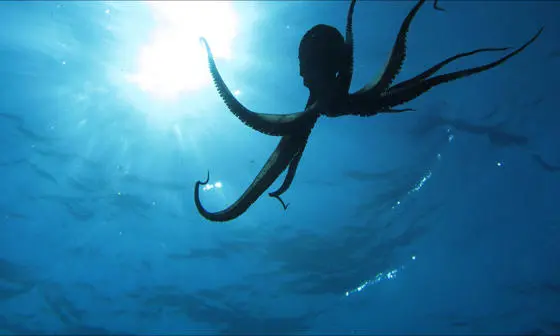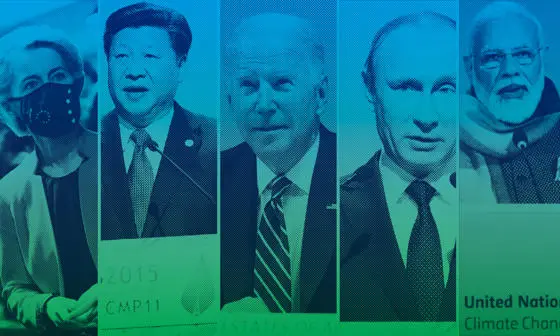Protecting the high seas

Contents
Nearly two-thirds of the world’s oceans lie outside the boundaries of any state – Areas Beyond National Jurisdiction (ABNJ), also called the "high seas", where all nations have the freedom to navigate and conduct scientific research with very few restrictions. But what does this mean for the protection of marine life in these waters? And how can the world ensure that the profits from products that result from discoveries in those waters are treated in a fair and equitable manner (a point of particular concern to developing countries who often struggle to compete with wealthier, technologically advanced nations)?
These are issues that have long interested Dr Siva Thambisetty, Associate Professor of Law at LSE and one of those involved in negotiations over the UN High Seas Treaty. Also known as the Treaty on Biodiversity Beyond National Jurisdiction (BBNJ), the historic agreement sets out the key principles, obligations and processes that all states must adhere to when operating in the high seas for the protection of marine life and the fair use of any marine genetic resources collected in those waters.
An advisor to Cuba, Chair of the G77 and China Group of Developing Countries, Dr Thambisetty was lead author of an internal briefing document setting out textual proposals for Part 2 on marine genetic resources; proposals that resulted in critical elements and wording used in the final Treaty text. Additionally, a Law and Policy Brief explaining the premise of the Group’s proposals, co-authored with other experts and published a week before negotiations opened, was one of the documents pored over by negotiators.
A very important principle for developing countries [was] the idea that whatever gains are made from activities in the high seas are shared equitably.
Intellectual property and the high seas
Intellectual Property (IP) Law – one of Dr Thambisetty’s areas of expertise - sets out the monopoly rights and protections relating to new products and inventions. But while some of the fiercest debate was over how gains (monetary and non-monetary) made from products that originated from marine genetic resources collected in the high seas would be shared, there is no reference to IP within the Treaty, nor in Dr Thambisetty’s Law and Policy Brief - a conscious decision in an attempt to avoid negotiations from being derailed by highly controversial and political demands.
"We have this principle of the ‘freedom of the high seas’, which sets out that countries can operate as they wish in the high seas under the UN Convention of the Law of the Sea. Developed countries such as the US, Switzerland and EU member states would like to see outputs from their work on the high seas to belong to them, which ties in with this concept. That is hard to challenge because of IP rights – for example if you conduct the research, some of which may rightly be called ‘bioprospecting’ and patent the results, such rights fall under a different system," she explains.
"Alongside this, however, we have the ‘common heritage of humankind’ regime which says the resources of the high seas belong to us all and are for everyone’s use and benefit. This translated into a very important principle for developing countries - the idea that whatever gains are made from activities in the high seas is shared equitably.
"Marine scientific research tends to link IP rights inextricably with freedom of the high seas - this is something I have considered in my research. Despite many attempts to craft a consensus position amongst developing countries, we had to leave out IP in the G77 + China’s consensus text proposals because IP rights are acute pressure points internationally. However we worked hard on other, alternate ways of ensuring that any gains from high seas research are shared equitably amongst nations."
Following fierce negotiations, legal semantics and last-minute concessions, Dr Thambisetty is delighted that the final text contains both the principles and processes needed to realise the equitable sharing of benefits – the result of compromises from both sides, she says.
Achieving consensus through diplomacy
When genetic samples are taken from the high seas, it’s important that we can ensure that both the immediate scientific and potential commercial benefits gained from the use of these samples flow back fairly.
As an expert on the Chair’s team, Dr Thambisetty’s proximity to negotiators allowed her to gain a clear understanding of the nuances and potential sticking points of not just the technical legal issues being discussed but the wider political pressuresthat also had to be satisfied before an agreement could be reached.
Following the adoption of a Global Biodiversity Framework at the 2022 United Nations Biodiversity Conference (COP15) in December 2022, she and co-authors Paul Oldham (One World Analytics) and Claudio Chiarolla (international law and policy advisor) published their brief, setting out how the BBNJ Treaty could work in a way that would allow for equitable agreement on the use of genetic materials found in the high seas, while keeping sight of the hard-won compromises reached at the CBD COP.
"For negotiations to succeed it was vital that the terms benefited everyone, everywhere, and not just the wealthy countries and their nationals who are best able to exploit them," she explains. "Any agreement on the use of marine genetic resources in both physical and informational form had to meet the needs of developing as well as the developed countries, and so our focus in internal briefings was to put everything down – explanations, counter-arguments, where things stood and what our ideal position and potential landing zones could be, including the setting out of a few compromises that we felt would help move discussion on from previous intergovernmental negotiations."
Ensuring developing countries also gain from profits originating from work on the high seas
One of Dr Thambisetty’s hopes was that any agreed Treaty would set out how any gains – monetary and non-monetary – made as a result of discoveries in the high seas would be shared equitably, and not simply pocketed by the country at the end of the chain, more likely to be one of the richer, developed countries.
"When genetic samples are taken from the high seas, it’s important that we can ensure that both the immediate scientific and potential commercial benefits gained from the use of these samples flow back fairly, and a key part of that is being able to identify the provenance of those genetic resources. That’s critical," says Dr Thambisetty. "It’s also an issue that has plagued the enforcement of the Convention on Biological Diversity. We’ve had decades of scholarship and arguments about this question and it was absolutely essential that we addressed this issue. I felt sure that there was a technically feasible and legally certain way to solve the question of provenance."
The technical solution, put together with substantial contributions from Dr Oldham and translated into appropriate legal text suitable for an international treaty – and a major win for the developing countries during negotiations – was the use of a batch identifier.
"Monitoring and transparency of activities with respect to marine genetic resources and digital sequence information on marine genetic resources of areas beyond national jurisdiction shall be achieved through the use of 'BBNJ' standardised batch identifiers", reads the Treaty in Article 16(1). This means that any country that collects marine genetic material from its original site must notify the treaty’s clearing house mechanism – a centralised, open-access platform – which will then generate the identifier. This tag groups all associated sequence information, samples and products that result from that discovery.
"Every time the sample or the information is used to produce something that is a material outcome, like a patent or a product, that identifier will be marked as having come from areas beyond national jurisdiction," Dr Thambisetty says. It also allows us to demarcate biodiversity that falls within national jurisdiction from those originating in ABNJ – bringing greater legal certainty and coherence to benefit sharing.
If we are able to tag genetic resources and track where or how they are used in the aggregate, that is a positive, and thus far, unprecedented start to fairer outcomes.
Proposals like these can often be dismissed as unworkable – something Dr Thambisetty knew she would have to address if it was to gain agreement. To head off any would-be critics, the G77 Group Chair’s experts worked with developed country experts and colleagues to test the workability of their proposals. Dr Paul Oldham, though his company One World Analytics, even set up a prototype website showing how easily an identifier can be generated once the obligatory information was entered into the system. The technical workflow of the identifier was also published a few days before negotiations began.
"Having a prototype meant that we could demonstrate how batch identification would work in practice," she says. "We presented it to the G77 and then held small group discussions so we could answer questions. This meant that when developing state parties went into those negotiating rooms they knew that it could work, not just legally but technically too and that there were no legitimate reasons why it should not form the basis of compromise treaty text."
The age of free biodiversity is over
Dr Thambisetty was keen to ensure that the treaty also set out requirements around the disclosure of material outcomes – another point she is delighted to have seen accepted by negotiators. "We wanted the treaty to set out up reporting obligations once any publications, patents or products are developed from these genetic resources," she says. "We didn’t set out what would happen subsequent to that on an individual product or patent basis, because that gets too close to industry interests and very difficult to achieve politically. But if we are able to tag genetic resources and track where or how they are used in the aggregate, that is a positive, and thus far, unprecedented start to fairer outcomes."
"The third element that I really wanted to see included was a way of moving away from simply talking about monetising product development or market sales as these rely on information disclosures that are not always forthcoming. There’s an argument to be made that the age of free biodiversity is finished. That there is always a benefit to the state or parties under the jurisdiction of a state, when you take and use biodiversity, and that the only reason we think of it as 'free' is because it doesn’t show up adequately in our national accounting systems. So we need to move beyond GDP accounting and talk about how we account for what some term 'natural capital'."
Having called for a new approach of ocean accounting – particularly the valuation of the marine genetic wealth of the ocean to become part of the BBNJ treaty, Dr Thambisetty is pleased that Article 14 (7) calls for a tiered fee to be paid that reflects aggregate levels of activities by State Parties around marine genetic resources, while 14(5) of the Treaty commits to ensuring: "monetary benefits from the utilization of marine genetic resources and digital sequence information on marine genetic resources of areas beyond national jurisdiction, including commercialization, shall be shared fairly and equitably..."
News that the world had reached its first agreement on activity in the high seas has been greeted with delight around the world. As someone in the room during the intense fortnight of negotiations, Dr Thambisetty shares the excitement, but stresses that the Treaty – which must still be formally ratified – is only the next step towards ensuring that the world’s oceans are managed in a sustainable and equitable way.
The Ocean Decade, she hopes, will see an increase in research on biodiversity of the high seas, bringing with it many interesting normative and policy questions. "There is need for a tremendous amount of further scholarship in this area," says Dr Thambisetty. "How do we value biodiversity? It might be equitable to talk about natural capital accounting, but how do we ensure that countries who aren’t able to participate also get a cut? And how do we ensure that the many provisions on capacity building and technology transfer are actually enforced by State Parties and are accepted by natural scientists as legal obligations and an ethical responsibility?
"This is the first international instrument that embraces the move from physical, tangible genetic resources to informational content – what will this mean for the ownership and control of genetic data and sequence information globally? Speedy ratification and appropriate enforcement by states will be critical. I shall continue to work in this area and be watching developments with great interest."
Dr Siva Thambisetty was speaking to Jess Winterstein, Deputy Head of Media Relations at LSE.
Download a PDF version of this article




